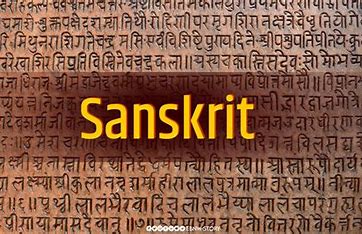![]()
Sanskrit, derived from the Sanskrit term saṃskṛta meaning “adorned, cultivated, purified,” is an Old Indo-Aryan language with roots tracing back to the Vedic period. The earliest documents, the Vedas, date back to approximately 1500 BCE and were composed in what is known as Vedic Sanskrit. Over the centuries, Sanskrit evolved into Classical Sanskrit, intricately described by the renowned grammarian Pāṇini in his masterpiece, the Aṣṭādhyāyī (“Eight Chapters”).
Classical Sanskrit and its Literary Heritage:
Classical Sanskrit, closely related to late Vedic, became a literary treasure trove, boasting works by eminent authors across various genres. Bhāsa, Kālidāsa, Śūdraka, Bhāravi, Māgha, and Bhavabhūti contributed to Sanskrit literature with timeless dramas, poetry, and epics. Kālidāsa’s masterpieces like “Śakuntalā” and “Meghadūta” continue to enchant readers. The epics, Rāmāyaṇa and Mahābhārata, are monumental Sanskrit compositions, with the former celebrated as India’s first poetic work.
Didactic and Philosophical Works:
Sanskrit’s versatility extends to didactic literature with the Pañcatantra and Hitopadeśa, embodying moral teachings. It served as a medium for philosophical treatises, logic, astronomy, and mathematical works. The Vākyapadīya by Bhartṛhari stands out as a pinnacle in semantics and the philosophy of language.
Sanskrit Beyond Boundaries:
Sanskrit transcends religious boundaries, finding expression in Jain and Buddhist texts, particularly among Mahāyāna Buddhists. Recognized as a classical and official language in India, Sanskrit persists in scholarly, literary, and technical realms, as well as in media platforms like radio, television, and film.
Grammatical Structure:
The grammatical structure of Sanskrit, akin to early Indo-European languages like Greek and Latin, is inflected. Nouns, pronouns, and adjectives exhibit gender, number, and syntactic cases. Verbs, demonstrating tense, mode, voice, number, and person, illustrate the language’s complexity.
Sanskrit stands as a linguistic marvel, preserving India’s cultural and intellectual heritage. Its enduring legacy in literature, philosophy, and religious texts reflects a profound influence on the development of thought in the Indian subcontinent. As we celebrate the 1-year anniversary of this rich exploration, Sanskrit continues to captivate minds and hearts, bridging the ancient with the contemporary.
Reference:







